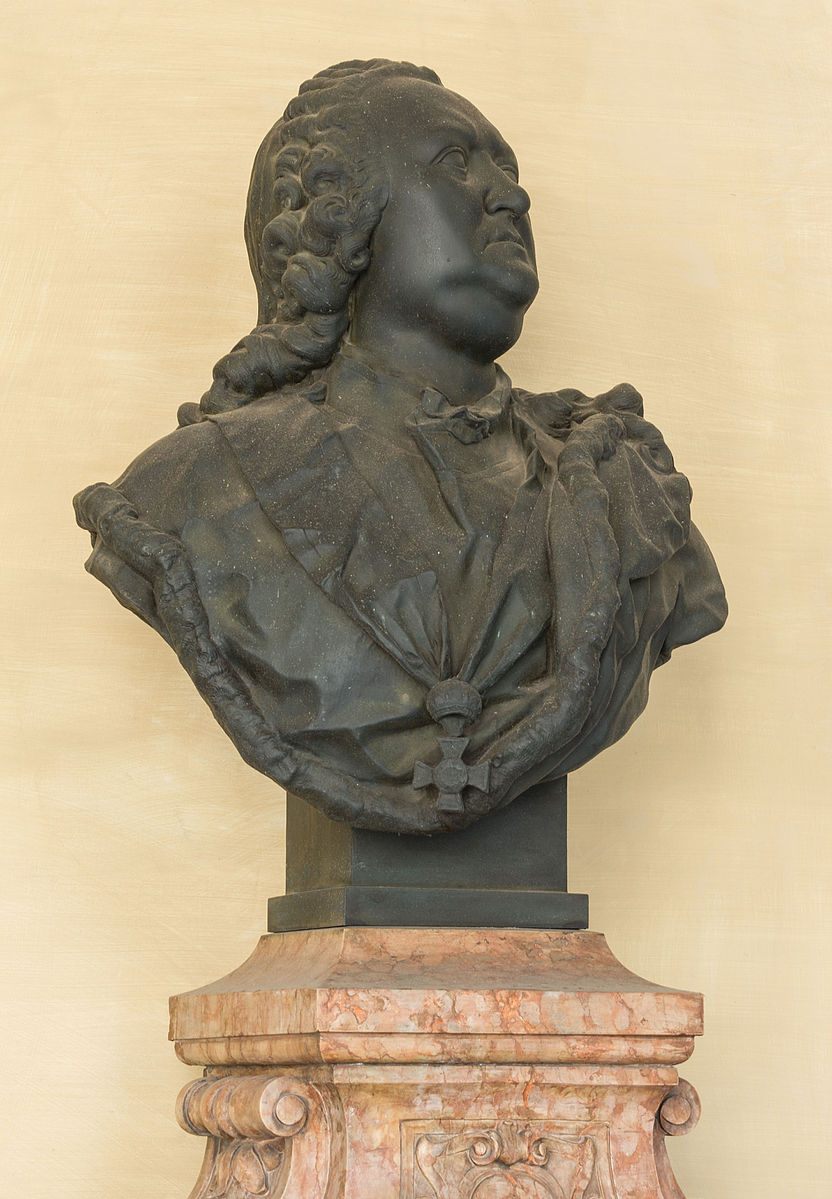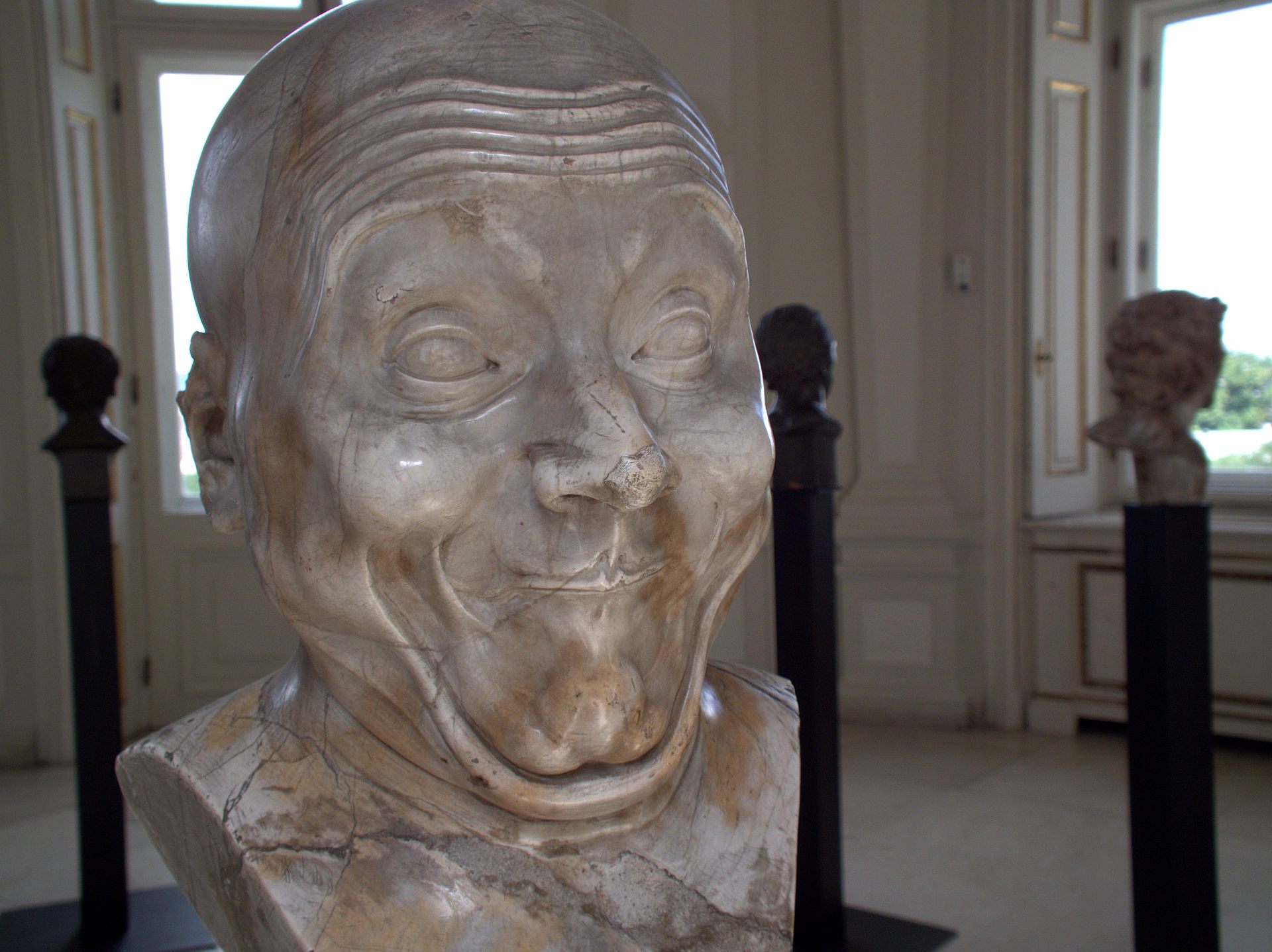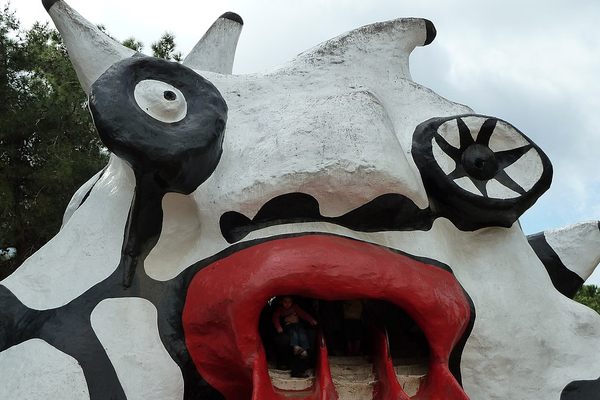Franz Xaver Messerschmidt, The Original Ghost-Buster
An 18th-century sculptor’s proto-selfies were supposed to scare off spirits, but mostly ended up ruining his reputation.

A few of Messerschmidt’s unsettling Head Pieces. (Photos, L-R: Jerzy Kociatkiewicz/cropped from original/CC BY-SA 2.0; sailko/cropped from original/CC BY-SA 3.0; Sam Howzit/cropped from original/CC BY 2.0; Jssfrk/Public Domain)
When celebrated sculptor Franz Xaver Messerschmidt died in Slovakia in 1783, he left behind very few possessions. He had a bed, and a tobacco pipe. He had a flute and a few art books. And he had, strewn around his room, dozens of sculpted copies of his own head, in various stages of grimace.
These are Messerschmidt’s confounding Kopfstücke, or “Head Pieces.” Of the 43 that survive today, some scowl or sneer, while others seem almost joyful. Most sport bulging eyes, protruding noses, or unnaturally stretched mouths. To modern eyes, they look like faces teens Snapchat to their friends while stuck in the drive-through line—but Messerschmidt wasn’t trying to pioneer the sculptural selfie. He was trying to protect himself from ghosts.
Before he gave shape to his best-known heads, Messerschmidt was a young artist with a formidable CV. Born in a small German town in 1736, he spent his early life studying sculpture under the tutelage of his two uncles, both renowned sculptors, in Munich. At 19, he joined the Academy of Fine Arts in Vienna; there he impressed the school’s director and picked up royal commissions, carving life-sized portraits of court members for Empress Maria Theresa of Austria. He also began honing a distinct style, more realistic than romantic—in his busts, everyday facial flaws like cheek pouches and eye wrinkles replace smoothed-out idealism and the trappings of royal life. Soon, he was hired by his alma mater. If all went according to plan, he would spend his life a professor of sculpture, mentoring students and immortalizing clients until he decided to retire.

A mid-career bust of Messerschmidt’s, of court physician Gerard van Swieten. (Image: Hubertl/CC BY-SA 4.0)
As his professional life flourished, though, so did his reputation for eccentricity. Messerschmidt was hotheaded and commanding, with little patience for the sometimes-petty politics of academia. He refused to kowtow before his department’s higher-ups and was occasionally violent. On a visit to Rome, the young sculptor dragged an entire tree trunk to the Farnesi Palace, set it up in front of the famous statue of Hercules, and began carving a copy. When a nearby peer expressed disbelief at this method, Messerschmidt slapped him. People began whispering about a possible “confusion in the head.”
A few years into his teaching career, Messerschmidt’s absurdities had outpaced his accolades. When his promised professorship was given to someone else, he left Vienna in a huff. He sold all of his possessions, wandered around Germany for three years, and eventually holed up in a riverside apartment on the outskirts of Bratislava, then known as Pressburg, in Slovakia. There, he supported himself with the occasional commission, but largely committed himself to a project nearer to his heart: his Head Pieces.
Most of our information about Messerschmidt’s reclusive era comes from Christoph Friedrich Nicolai, a German bookseller who visited him in Pressburg in 1781. According to Nicolai, Messerschmidt spent his new free time delving into a facet of his life that the university environment had, largely, kept him from exploring—his active relationship with the spirit world. Ghosts had “haunted, scared, and tortured” Messerschmidt nightly for years, he told Nicolai, according to a translation by Herbert Ranharter. In hopes of controlling this unbearable torment, he was making himself a series of talismans: sculpture after sculpture of human faces, including his own, contorted into what he called “the 64 different varieties of grimace.”

“An Intentional Wag,” one of the more joyful Messerschmidt busts. (Photo: DALIBRI/CC BY-SA 3.0)
“I saw him work on his sixty-first head,” Nicolai writes. “He would look into a mirror every half-minute and make with great accuracy the grimace he needed.” He would chip a fragment of that grimace into marble and then pull the face all over again, like the sole player in an endless game of peek-a-boo. Messerschmidt choreographed his faces precisely, pinching himself on certain parts of his body—the thigh, the ribs—in order to provoke certain expressions. These faces, he thought, demonstrated “ideal Egyptian proportions,” powerful enough to drive off the spirits. It was his duty to preserve them for future generations, in life-sized busts of tin, lead, and marble.
Though dubious of Messerschmidt’s methods, Nicolai was impressed with his results. “As art, the heads are masterpieces,” he concluded. “They cannot be looked at without admiration.”
Other contemporary critics responded differently. Just two years after Nicolai visited, Messerschmidt died, leaving 69 complete character heads. A few years later, just over 40 of these were exhibited for the first time, en masse, at the Citizen’s Hospital in Vienna. Visitors came to gawk at the heads, which the exhibition’s anonymous cataloguer had bestowed with new, over-the-top titles: “The Vexed Man;” “The Strong Odor.” A bald head with bulging cheeks was renamed “The Incapable Bassoonist.” A scrunch-faced man became “The Constipated One.” Audience members turned from the the gritting teeth of “The Enraged and Vengeful Gypsy” only to to be faced with “A Hypocrite and a Slanderer,” looking down in distress.

“A Hypocrite and a Slanderer,” on display at the Met in 2010. (Photo: Gryffindor/CC BY-SA 3.0)
These names, which may have been meant to make the sculptures more accessible, “succeeded only in rendering [them] stranger still,” writes art historian Michael Yonan. What was supposed to be an art exhibition was instead considered a kind of frozen freak show. After the first display ended, the busts were split up into private collections, and some were destroyed completely. Others occasionally resurfaced at a Vienna amusement park, which sold wax and plaster copies people used for target practice.
The man who made them continued to fascinate, though not in the way he might have hoped. For centuries after his death, Messerschmidt was treated not just as a departed artist, but as a kind of posthumous patient. The psychoanalyst Ernst Kris wrote two treatises on Messerschmidt, concluding that he suffered from paranoid schizophrenia. Contemporary experts believe he may have had Crohn’s disease, which would explain the rib-pinching. Even his good friend Freidrich Nicolai “diagnosed” him with bad circulation.

A lithograph showing 49 of the character heads, made by Matthias Rudolph Toma in 1839. (Photo: Österreichische Nationalbibliothek/Public Domain)
It’s impossible to know what was inside Messerschmidt’s intestines, let alone his mind. But the heads he left behind—in tin, bronze, lead, and marble—have aged well. Later generations of critics, starting a century after his death, were less concerned with the artist’s potential madness and more impressed with his iconoclastic vision and command of the form, calling the busts “heroic” and “before [their] time.” In 2010, Messerschmidt fans staged a kind of reunion tour, bringing 19 of the heads together at the Neue Galerie in New York, and then at the Louvre.
Modern viewers saw a collection of faces that, in this era of omnipresent talking heads and self-expression, were a sight more relatable. “Messerschmidt’s sculptures, which once struck audiences as alien and nuts, simply make some human sense in our century,” wrote New York Times critic Holland Cotter. Through sculpture, Messerschmidt hoped to bust the ghosts that had haunted him. Thankfully, he left his ghost-busts to haunt us instead.

























Follow us on Twitter to get the latest on the world's hidden wonders.
Like us on Facebook to get the latest on the world's hidden wonders.
Follow us on Twitter Like us on Facebook